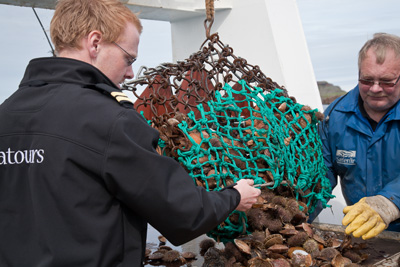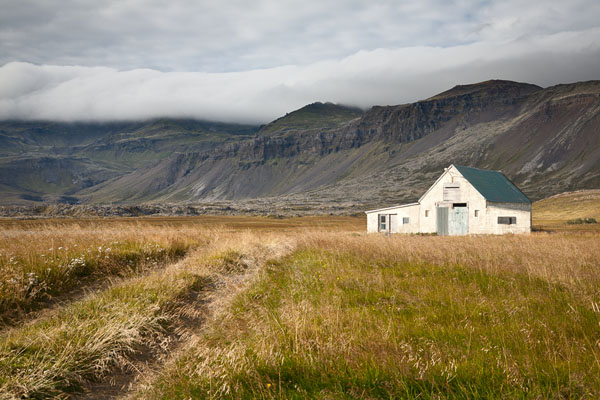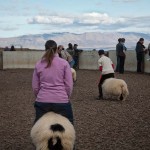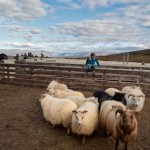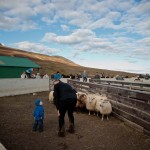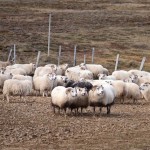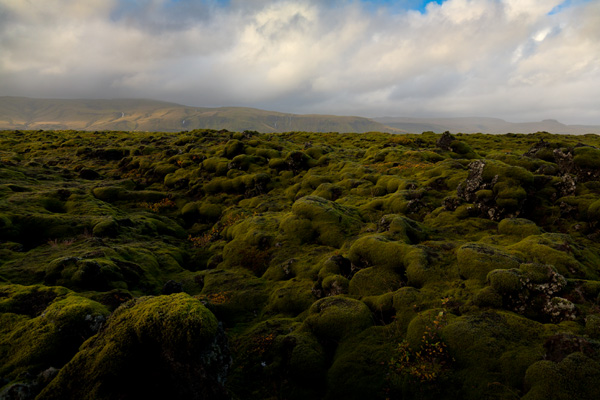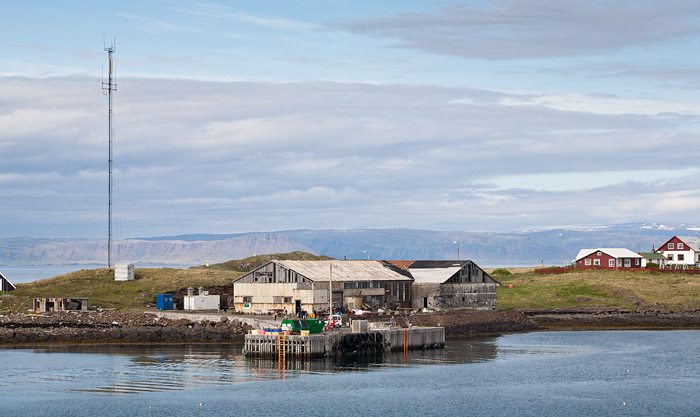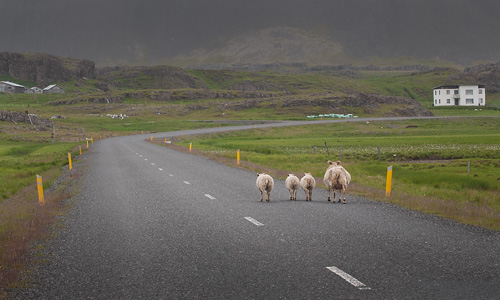Food
Do they have nice food in Iceland?
Yes, they do. But if you believe some of the tourist guides, you mightn’t think so. According to some reports, Icelanders live on a diet of rotting shark, pickled ram’s testicles, grilled minke whale and smoked puffin.
The culinary highlights for tourists are hot dogs and hamburgers. This starts to sound believable when you read that the most popular restaurant in Iceland is a hot dog stand.
Bæjarins Beztu Pylsur
However, we were very pleasantly surprised to find that there is real, fresh and excellent food available just about everywhere. We didn’t try the hot dogs, but on the couple of occasions we resorted to hamburger, we were very pleasantly surprised at the range of choice and the quality. (If you find yourself in Stykkisholmur, go to the Café Narfeyrarstofa and have the hamburger with the blue cheese dressing.)
Although the lamb in its various forms was excellent, the best option just about everywhere was seafood. In most places, this is served the day it is caught and in some places it is straight off the boat.
In Isafjordur, the Tjöruhúsið (Tar House), a restaurant in the local folk museum, is right beside the harbour. There is no menu, just whatever was caught that day. The fish is fried and delivered to the table in the pan in which it was cooked.
We were having an afternoon coffee at the Café Riis in Holmavik, when about 3.30 pm a man entered and asked the waitress what the catch of the day was. She replied, “I don’t know. We haven’t caught it yet.” We decided to go back that evening and find out. It turned out to be trout from a local lake.
But the freshest seafood of all was in Stykkisholmur. We went on a boat trip to see the rare white-tailed eagles nesting on an island in the fjord. On the way back the crew dropped a basket overboard and scooped up a load of scallops and sea urchins. These were opened and eaten on the spot. My first scallop had been out of the water for less than a minute.
